[REVIEW] Pikmin 3 (Wii U)
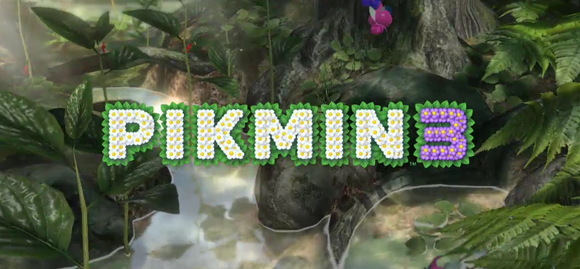
System: Nintendo Wii U
Release Date: August 4, 2013
Developer: Nintendo EAD Group No. 4, Monolith Soft
Publisher: Nintendo
Author: Jack
There seem to be two branching philosophies various game developers employ for their secondary and tertiary takes on intellectual properties.
The first take is the “disparate” sequel, where designers conjure up an intriguing gameplay concept and slap a brand well-ingrained in the public conscious onto it, majorly or even wholly changing core gameplay from a sequel’s preceding entry. While many consider this a less-than-affable way of spreading new ideas by exploiting referential IPs, it’s a path that’s lead to more than its fair share of iconic and revolutionary games (Resident Evil 4, Grand Theft Auto III, Jak II, and Dynasty Warriors 6 all being great examples).
The second and more oft-used take is the “retread” sequel, where the original strengths in a game are rehashed and expanded upon, with a sprinkling of nuance-extrapolation here, and a dazzle of fresh-gameplay-motifs-wrapped-around-the-same-core-gameplay there. Sequels made in this vein, in large, try to refine a presented idea with sheer heuristic redaction, letting time and outside perspective lend itself in the design and development process. Retread sequels often attract a fair degree of criticism; in many cases, retreads aren’t perceived to have strayed far enough from the origin, and while some games feel like they do just need more pure content iterated out, a lot of the time it just feels like we’re hopelessly doing the same thing a year later, a foot taller.
The work of Nintendo’s development teams has fallen into both camps, sometimes to aplomb, and sometimes to obscurity; they’ve (by popular consensus, mind you me) succeeded and failed with re-imaginings Super Mario 64 and Star Fox Adventures, and respectively waxed and waned with retreads Animal Crossing: New Leaf and New Super Mario Bros. 2.
So, where does Pikmin 3 fit into all of this?
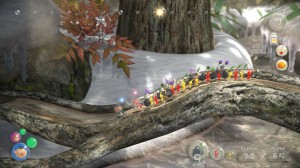
In moulding itself perfectly around the original idea of Pikmin, Pikmin 3 seamlessly adds a truly picture-perfect and contemporary control scheme that, in tandem with an indelible new alteration to core gameplay, makes things still feel wholly fresh. The nine-year wait is over, Pikmin fans, and we’ve been rewarded with a retread of the caliber Nintendo usually only reserves for a proper 3D Mario or Zelda title.
I didn’t feel it started out that way, however. I may have been grumpy, sleepy, or a combination of the two, but for whatever reason, I was minorly off-put during the get-go of Pikmin 3. Every big-budget game seems to have to hackney in some sort of lengthy exposition at the beginning, and Pikmin 3 was no exception; I felt the fully narrated introduction to the story and slightly Japanese vocal undertone throughout went against the ubiquitous and microscopic feel that the Pikmin series is known for (a subjective criticism, to be fair), and the constant stoppings and startings during the tutorial stage, along with the displaying of hints and tips during load screens, served as a slight obstruction in achieving immersion with the overarching Thoreauean theme of a wondrous natural environment enveloping technology.
Any eukaryotic unpleasantness I felt was forever banished, however, as soon as I became accustomed with the control scheme Nintendo custom-fit for Pikmin 3. A meshing of Generation Seven and Eight, on-screen control is performed with the Wiimote and Nunchuck method introduced in the New Play Control Wii ports of Pikmin and Pikmin 2, while overhead, large-scale direction is effortlessly implemented via guiding over the map on the GamePad and selecting a destination for your party with a finger. New Play Control implementation is sonorously meritable in its own right; to add on a pliable overhead map via the Gamepad that not only earmarks landmarks, but stray Pikmin as well, is downright genius. Player synchronization with the control of console real-time strategy games, due to the ancillary screen, feels decades in advance in relation to contemporary titles with the release of Pikmin 3.
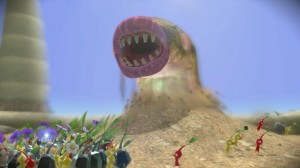
Command of my miniature armada was so tight, and information so readily available, I was worried there would be no challenge at all; making it back to the ship and gathering nearby wayward Pikmin before sunfall– tasks that normally built a deal of tension in previous titles– were a dunk in the breeze. Thankfully, Nintendo did a truly masterful job of upping the other half of the ratio between perfect Pikmin management and utter Pikmin disorganization by making tasks more and more intricate and divisive, yet organically never becoming too mind-bogglingly complicated. By increasing minute gameplay complexity by forcing the splitting up of focus in real-time sequences, needed tension was revitalized.
Though Pikmin 3 is, in large, comprised of standard, modern age Nintendo prosody (uncover a new ability, conquer a new area needing a mix of the new ability and a conflation of new and old abilities, unlock a shortcut to said area after completion), it differs from its predecessors in the series with the introduction of simultaneous control of three alien hominids in Alph, Brittany, and Charlie, explorers from the planet Koppai in search of sustainable resources for their dying home planet. Puzzles based off of this core gameplay shift included performing up to three different tasks with three different groups of Pikmin, and areas needing two additional Pikmin commanders to be subsequently tossed into otherwise-inaccessible spots. Said challenges were simple in execution, yet abound in complexity, and created a foundation where pretty much any replacement-level level design would pass with flying colors; indeed, a bad level, nay, an unsatisfactory moment, wasn’t to be had in the entirety of Pikmin 3’s gameplay.
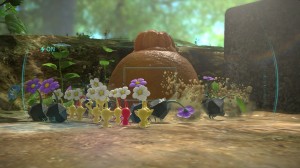
As Pikmin 3 progressed, I couldn’t help but notice how meticulous Kyoto’s brightest were with the pacing of things. The introductory period with each new species of Pikmin, for example, seemed to all last around the same time, and individually stimulate backtracking all the same when recalling areas with previously-inaccessible items represented with obvious visual cues (a piece of fruit, for example, lying underwater in the first level, or a spaceship addition resting in a too-tall canopy in need of flying Pikmin to reach). Often times in the world of adventure gaming, gameplay will change negatively on a fine scale when new items are introduced; older items become obsolete, and certain areas become instant afterthoughts once they’re able to be zoomed through. I can proudly say that I never experienced that stigma in Pikmin 3, which might very well be the most finely-tuned and idiosyncratically-nuances title in Nintendo’s illustrious canon.
This time ‘round, Nintendo went away with an overarching time limit in the form of a dwindling oxygen supply, instead relying on having the protagonists constantly needing to refill their rations with an ever-abundant supply of surrounding fruit. In addition to boosting the gameplay motif of task diversity, this open-ended method of temporal control did a tremendous job of stressing a completionist vibe within the game. While the main game should take around ten hours to beat, collecting every fruit, ship log, and insect species entry should tack on another fun-filled eight. Nintendo also did a great job of tracking your score once complete, and in a Sin & Punishment, arcade-esque manner, doing it all over again to beat your old time shall be mighty tempting in future days.
Another element you’ll find in spades amongst the Grandma’s-wool-blanket amount of layers present in Pikmin 3: charm. Whether it be Brittany’s taste-testing accounts of each new, uniquely named fruit you gather, the bouncy, ambient background music, or the ambitious squeal of Pikmin hard at work, Nintendo definitely succeeded in adding an Animal Crossing-esque level of grace to every corner of the experience. Marginally supplanting a potential aura of discovery as in the first in the series, it’s a touch very contemporary with Nintendo, and though it added some degree of contempt by contrasting such a serious vibe with a comical one, I felt using meretricious humor acted as a passable vehicle in getting from one portion to another.
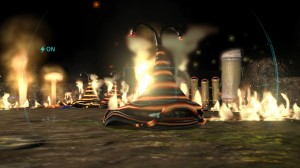
Oddly enough, contrasting with the previous theme is another element abundantly present over the course of Pikmin 3: stark visual clarity. Similar to how the control scheme would not be possible on an earlier console, a lot of the beauty and overarching mise-en-scène would be lost without its HD formatting. While there are too many jaw-dropping scenes of small-scale life to note, I will say that hearing the ship’s endearing musical theme carried on from Pikmin continuously acted as a very touching denouement to each in-game day.
Though I’ve been talking up Pikmin 3 as a flawless masterpiece up to this point, it’s important to note that, due to inherent design, Pikmin 3 never did reach the same iconic, emotive level that all of Nintendo’s grandest hits reach. Pikmin 3’s gameplay motifs, while infinitely seamless in practice, could have actually been expanded upon further to give the game a little more “oomph”, memorability, and length; a lot of sequences were exceptional to execute, but didn’t capture the same magic that, for example, the Portal series has. Despite a wonderfully subtle, yet increasingly apparent Koyaanisqasti-like backdrop, in addition to a creative, lengthy, yet trifling-at-times amalgamate final boss, Pikmin 3 certainly tried to stand out at times, but ended up falling just a little short of being an all-time classic.
Buy this game if…
… big budget Nintendo like Zelda or Metroid is your name.
Don’t but this game if…
… moderately complicated and complex gameplay scenarios aren’t your game, or if you truly can’t stand a cartoonish aesthetic.

Want to participate in more NintendoEverything goodness?
Try our Facebook page!
Or our Twitter page!